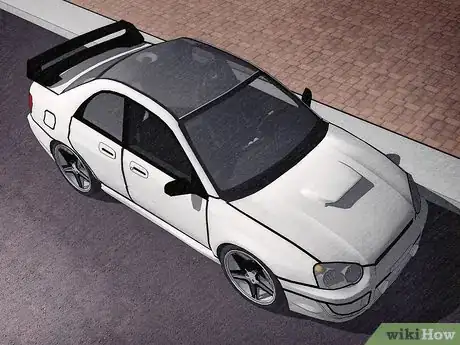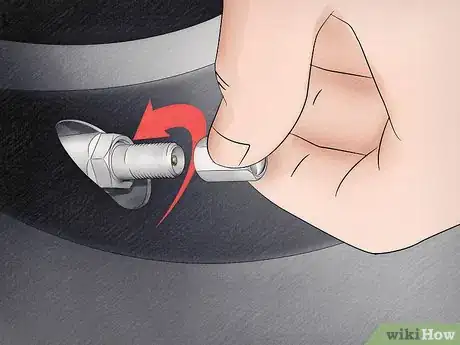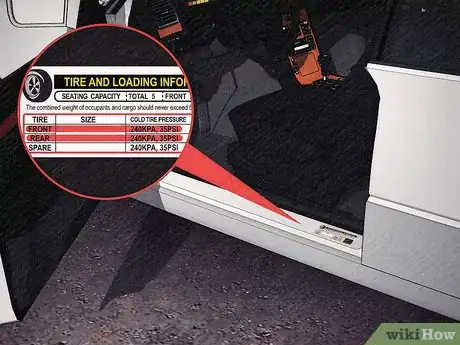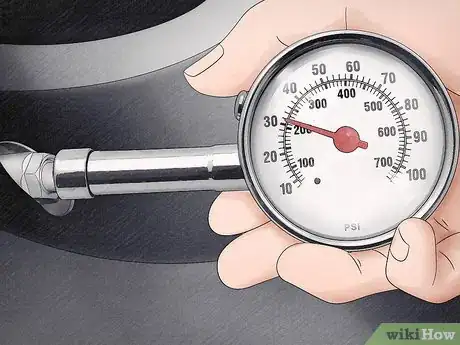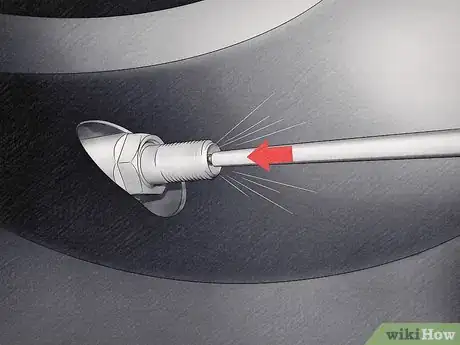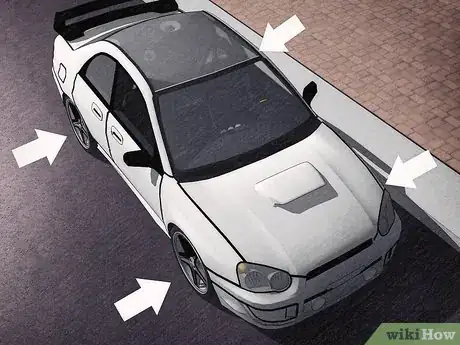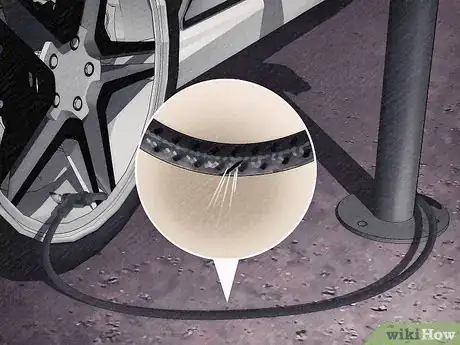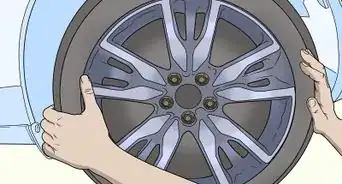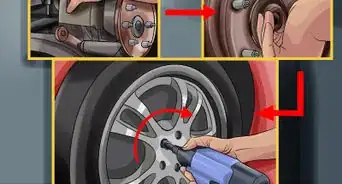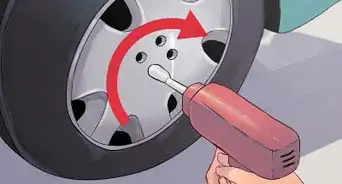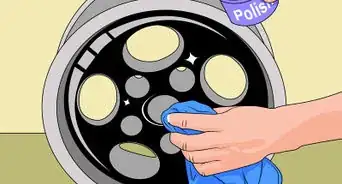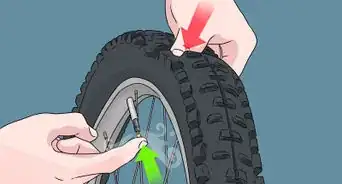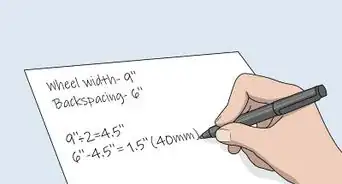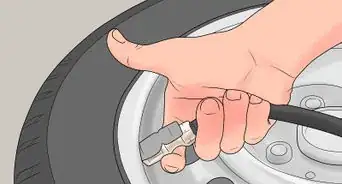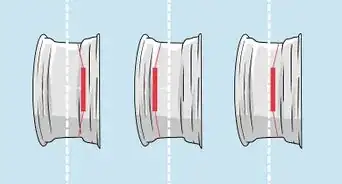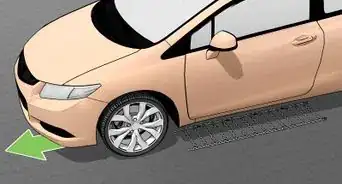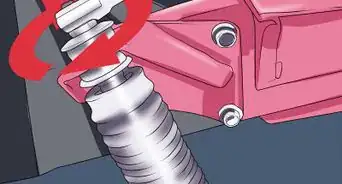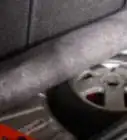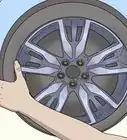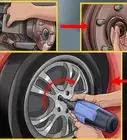This article was co-authored by Howard Fleischmann. Howard Fleischmann is an Automotive Tire and Repair Specialist and the CEO of Community Tire Pros & Auto Repair, with ten locations throughout Phoenix, Glendale, Yuma, and Casa Grande, Arizona. Howard specializes in full-service auto repair and tire replacement and care for domestic/imported vehicles and large trucks. Howard’s dedication to Community Tire Pros & Auto Repair has earned their team multiple awards and features including the 2021 Phoenix Magazine AZ State 48 “Best of the Best!”, the 2020 “Best of Phoenix” in Auto Repair, the 2013 Master SBD award, the 2013 National “Top Shop” award by Tire Review, the 2012 Diversity Champions Phx Business Journal, the 2009 BBB Ethics award, the 2008 Phx Chamber of Commerce Impact Award -” Small Business of the Year”, and the 2008 ASU Spirit of Enterprise award. Howard is often referred to as “The Car Guy” for local TV stations and is a regular on TV’s Channel 3 Sunday, Good Morning Arizona monthly.
This article has been viewed 142,356 times.
Keeping your tires properly inflated can improve the fuel economy and performance of your vehicle while reducing uneven wear in your tires.[1] But if you don't have an air compressor, you may be scratching your head as to how to inflate your tires at home. It's a good thing this can be done easily with a Schrader valve equipped bike pump. As long as the tire hasn't broken loose from the bead, a bike pump will do the trick![2]
Steps
Prepping to Pump
-
1Park on a clear, flat surface. A clear parking area will allow you to freely move around your car to fill up tires without anything getting in the way. Parking on a level surface will make it easier for you to balance and operate your pump.
- If you don't have a suitable clear, flat surface at home, you might park in the street or a neighbor's driveway.
- Driving on tires that are flat can damage your tire or deform the rims of your wheels, causing expensive damage. Drive as little as possible on flat tires.[3]
-
2Remove valve caps. The valve cap for each tire will be on the sidewall of the tire, positioned closely to the metal of the wheel's rim. Generally, these caps are screw-on. Unscrew the valve caps for all tires.[4]
- Valve caps are small and easy to lose. To prevent yours from getting lost, keep them in a sealable container, like a plastic baggie or a lidded plastic container.
Advertisement -
3Determine the optimal pressure for your tires. This value will be in PSI (pounds per square inches). The recommended tire pressure for your vehicle is generally written on a sticker inside of the driver's door. Open this door and inspect it for a tag indicating the ideal air pressure.[5]
- If you can't find the tire pressure information on your door, or if the information is unreadable, tire pressure information can be found in your car's manual.
- In the rare case that you lack both the tire pressure door sticker and your car's manual, you can look up the optimal air pressure for your car and tire online.
- For some vehicles, the recommended tire pressure for front and back tires may be different.[6]
-
4Check tire pressure with a tire pressure gauge. Wait for three hours after driving for the most accurate reading.[7] Inspect the tire pressure gauge and tire valve to make sure these are free of dirt or grit. This can sometimes get caught in a valve, making it leak, difficult to pump, or difficult to take a pressure reading. Take your gauge and:
- Position it on top of the stem the tire valve. Press the gauge into the valve firmly until the sound of escaping air ceases, then release.
- Look at the reading on your gauge. Many common gauges have a slide reader that pops out of the base of your gauge after taking the reading.
- Compare this reading to the recommended PSI to determine whether your tire needs air. Repeat this for all tires on your vehicle.[8]
Inflating Car Tires with a Bike Pump
-
1Attach your pump to the tire valve. Take your bike pump and position its valve end over the valve of the tire you are pumping.[9] The lever on the back of the valve should be touching the hose in the unlocked position. Press the pump valve firmly onto the tire valve, then raise the lever to lock the pump onto the tire valve.
- When attaching your pump to the tire, you'll likely hear air escaping. This is completely natural when locking your bike pump valve in place.
- A Schrader valve generally has a stem, at the end of which is threading for a screw on cap. Inside the end of the stem, you should see a small metal pin.
- Presta valves, the second most common valve used for bike pumps, will have a thin, threaded cylinder of metal extending from the stem.
- Many bike pumps come equipped with a Schrader valve, which is also called an American valve. This part is necessary for pumping up your car tires.
-
2Pump up your tire. Raise and lower the pump bar of your bike pump steadily. This will take some time and elbow grease.[10] At regular intervals, check your tire pressure. Overfilling your tires can cause strain on the tire and compromise its integrity.[11]
- Always follow the manufacturer recommendations for best results, but generally, avoid filling your tires with five PSI more or less than the recommended amount.
- A bike pump will move less air at a slower rate than a compressor, which means that this can take quite some time before your tire is filled.[12]
-
3Adjust tire pressure as necessary. In the event you overfilled your tire with air, use your tire pressure gauge or some other tool to press the pin in the center of the tire valve to the side of the valve. This will release air in the tire and decrease pressure.
-
4Inflate the remaining tires. In the fashion described, move from tire to tire, checking tire pressure, inflating, and adjusting each until all tires are the same pressure. When all tires are complete, take your valve caps from their container and reattach them.[15]
Troubleshooting Problems
-
1Avoid using gauges attached to air compressors. In a pinch, these kinds of gauges can give you a rough idea of the air pressure of your tires. However, these are often inaccurate and wear out easily, so a separate tire pressure gauge is best.
- Tire pressure gauges are relatively inexpensive and small. Put one in the glove box of your car so you always have one on hand.[16]
-
2Verify the pump is securely fastened. Sometimes, the pump valve and the tire valve will seat poorly, creating gaps where air can escape. This can decrease the amount of air you pump into the tire with each pump.
- In especially bad cases, a poor seal between valves can cause the tire to deflate faster than you are inflating it.
- Most poorly seated valves can be corrected by removing the pump valve and reattaching it again.
-
3Inspect the hose of your pump for leaks. Bike pumps have a fairly long shelf life, but the hose of older pumps can break down over time. Cracks in it can result in more air being pumped outside the tire than what makes it inside.
- Frequently, corroded or cracked hosing can be identified by sight or with a touch check. If you feel cracks, holes, or disintegrating hose, your hose may have a leak.
Warning
- Over or under inflating the tires of your vehicle can result in expensive damage to your tire, wheel, and car.
- Avoid driving on flat tires, as this can permanently deform your rim, requiring you to replace it.
Things You'll Need
- Tire pressure gauge (for cars)
- Bike pump (with Schrader valve attachment)
References
- ↑ http://www.bridgestonetire.com/tread-and-trend/drivers-ed/how-to-check-tire-pressure
- ↑ Howard Fleischmann. Automotive Tire & Repair Specialist. Expert Interview. 4 June 2021.
- ↑ http://www.dmv.org/how-to-guides/check-tire-pressure.php
- ↑ http://www.maxxis.com/media/420089/layered_tire.pdf
- ↑ http://www.dmv.org/how-to-guides/check-tire-pressure.php
- ↑ http://www.bridgestonetire.com/tread-and-trend/drivers-ed/how-to-check-tire-pressure
- ↑ http://www.dmv.org/how-to-guides/check-tire-pressure.php
- ↑ http://www.bridgestonetire.com/tread-and-trend/drivers-ed/how-to-check-tire-pressure
- ↑ Howard Fleischmann. Automotive Tire & Repair Specialist. Expert Interview. 4 June 2021.
- ↑ Howard Fleischmann. Automotive Tire & Repair Specialist. Expert Interview. 4 June 2021.
- ↑ https://www.youtube.com/watch?v=bF9Y8OcxM4M
- ↑ http://www.dmv.org/how-to-guides/check-tire-pressure.php
- ↑ https://www.youtube.com/watch?v=bF9Y8OcxM4M
- ↑ http://www.dmv.org/how-to-guides/check-tire-pressure.php
- ↑ https://www.youtube.com/watch?v=bF9Y8OcxM4M
- ↑ http://www.dmv.org/how-to-guides/check-tire-pressure.php
About This Article
Although it will take a little elbow grease, you can easily inflate your car tires with a bike pump. Start by unscrewing your wheels' valve caps, which are located on the inner part of the tire. Then, attach your pump securely so no air leaks out and pump your tires. Use a pressure gauge to make sure your tires have the right amount of air in them. Attach your gauge every 10 pumps or so to check the tire pressure. You can find your tires’ recommended pressure in your owner’s manual or on a sticker inside the driver’s door. For more tips, including how to check your pump for leaks, read on!

